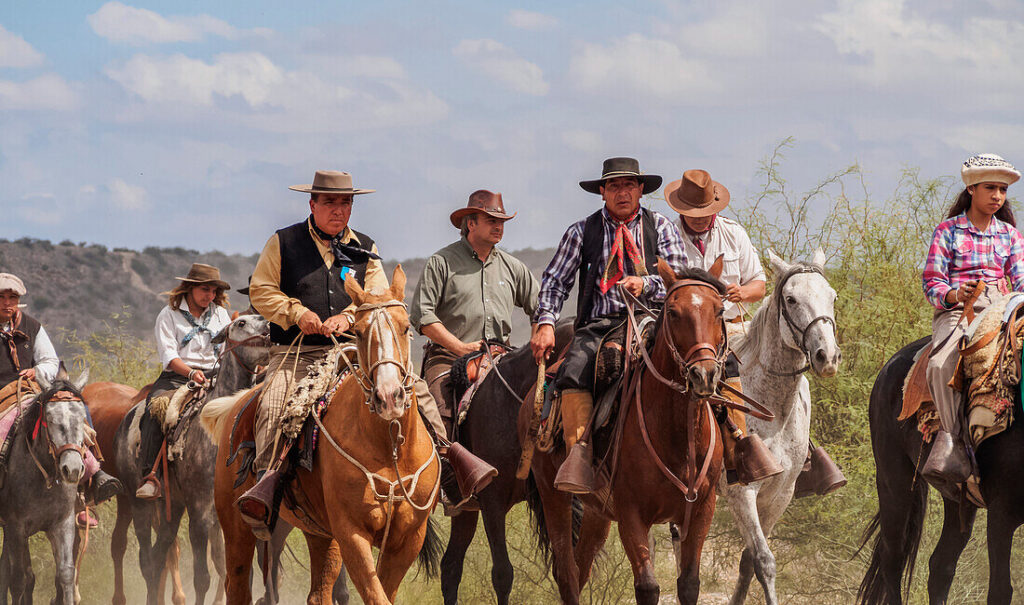Best Time to Visit Argentina: A Complete Guide
Argentina, a country of stunning landscapes, vibrant culture, and diverse climates, is a destination that can be visited year-round. However, the best time to visit depends on your preferences, budget, and the regions you plan to explore. Whether you’re looking to explore the bustling streets of Buenos Aires, hike through Patagonia, or relax in the wine country of Mendoza, understanding the weather patterns and seasonal variations is key to making the most of your trip.
In this post, we’ll break down the best times to visit Argentina, comparing the seasons, weather conditions, and key activities to help you plan your trip effectively.
Understanding Argentina’s Seasons
Argentina is in the Southern Hemisphere, which means its seasons are the opposite of those in the Northern Hemisphere. When it’s summer in North America or Europe, it’s winter in Argentina, and vice versa. This is an important factor to consider when planning your trip, especially if you’re traveling from the Northern Hemisphere.
Key Seasons in Argentina:
Summer (December to February)
- Weather: Hot and humid in the north, mild in the central regions, and cool in the south.
- Activities: Ideal for visiting the beaches of Mar del Plata, exploring the Iguazú Falls, Hiking in Patagonia, and enjoying outdoor festivals.
- Tourist Season: High season, with larger crowds and higher prices.
Autumn (March to May)
- Weather: Mild temperatures, with beautiful fall foliage in the central and southern regions.
- Activities: Great for wine tasting in Mendoza, hiking in Chalten, and visiting the Lakes at the south.
- Tourist Season: Shoulder season, with fewer crowds and lower prices.
Winter (June to August)
- Weather: Cool to cold, with snow in the Andes.
- Activities: Perfect for skiing in Bariloche, visiting the glaciers in Patagonia, and enjoying the cultural events in Buenos Aires.
- Tourist Season: Low season, with the exception of ski resorts, which are in high demand.
Spring (September to November)
- Weather: Mild and sunny, with blooming flowers and green landscapes.
- Activities: Ideal for visiting the Patagonia region, hiking, and exploring the countryside.
- Tourist Season: Shoulder season, with moderate prices and smaller crowds.
Weather Patterns Across Argentina
Argentina’s weather varies significantly depending on the region. The country stretches from the subtropical north to the temperate south, with the Andes Mountains running along its western edge. This diversity in geography creates a wide range of climates, from the hot, humid weather of the Iguazú Falls to the cold, windy conditions of Patagonia.
Northern Argentina
- Weather: Hot and humid year-round, with heavy rain during the summer months.
- Best Time to Visit: The dry season (April to September) is the best time to visit the north, especially if you’re planning to explore the Iguazú Falls or the Chaco National Park.
- Key Activities: Hiking, birdwatching, and visiting indigenous communities.
Central Argentina
- Weather: Temperate, with warm summers and cool winters.
- Best Time to Visit: Spring (September to November) and autumn (March to May) are ideal for visiting cities like Buenos Aires and Córdoba, as well as the wine regions of Mendoza.
- Key Activities: Wine tasting, city tours, and cultural events.
Southern Argentina
- Weather: Cool to cold, with strong winds and rain in the winter months.
- Best Time to Visit: Summer (December to February) is the best time to visit Patagonia, as the weather is milder and the days are longer.
- Key Activities: Hiking, camping, and exploring the stunning landscapes of Patagonia.
Time Zone Considerations
Argentina is in the Argentina Time (ART) zone, which is UTC-3. This is the same as Eastern Daylight Time (EDT) in North America during the summer months. However, during the winter months, Argentina is two hours ahead of Eastern Standard Time (EST).
Understanding the time zone differences is important for planning your trip, especially if you’re traveling from a distant country. For example, if you’re flying from Europe, you’ll need to account for the time difference to avoid jet lag.
Degrees of Weather Extremes
Argentina experiences a wide range of weather extremes, from the scorching heat of the Chaco Desert to the freezing cold of Patagonia. Here are some key insights to help you prepare for your trip:
Summer Weather
- Degrees: Temperatures can reach up to 35°C (95°F) in the north and 25°C (77°F) in the south.
- Rain: Summer is the wettest season in the north, with heavy rain showers common in the afternoon.
- Implications: If you’re visiting during the summer, pack light clothing, sunscreen, and a rain jacket.
Winter Weather
- Degrees: Temperatures can drop to -10°C (14°F) in the south and 5°C (41°F) in the north.
- Rain: Winter is the driest season in most parts of Argentina, with minimal rainfall.
- Implications: If you’re visiting during the winter, pack warm clothing, including a heavy coat, gloves, and scarves.
Regional Variations
Argentina’s diverse geography means that the weather can vary significantly from one region to another. Here’s a breakdown of the best times to visit some of the most popular regions:
| Region | Best Time to Visit | Weather Conditions | Key Activities |
| Buenos Aires | Spring (Sept-Nov) & Autumn (Mar-May) | Mild temperatures, fewer crowds | City tours, cultural events, food tours |
| Patagonia | Summer (Dec-Feb) | Mild, sunny, longer days | Hiking, camping, scenic drives |
| Mendoza | Spring (Sept-Nov) & Autumn (Mar-May) | Mild, sunny, harvest season | Wine tasting, vineyard tours |
| Iguazú Falls | Dry season (Apr-Sep) | Hot, humid, less rain | Hiking, boat tours, wildlife spotting |
| Bariloche | Winter (Jun-Aug) | Cool, snowy, festive | Skiing, snowboarding, scenic views |
Rain and Its Implications
Rainfall in Argentina is not consistent throughout the year or across all regions. The northern regions experience heavy rain during the summer months, while the southern regions are generally drier.
- Northern Argentina: Heavy rain showers are common during the summer, making it important to pack a rain jacket and waterproof gear.
- Central Argentina: Rainfall is moderate, with the most significant amounts falling during the summer months.
- Southern Argentina: Rain is less frequent, with most of the precipitation falling as snow during the winter months.
Understanding the rainfall patterns is crucial for planning outdoor activities, such as hiking or exploring the countryside. For example, if you’re planning to visit the Iguazú Falls, it’s best to avoid the rainy season to make the most of your trip.
Conclusion
Argentina is a year-round destination, but the best time to visit depends on your preferences and the regions you plan to explore. Whether you’re looking to enjoy the beaches of Mar del Plata, hike through the stunning landscapes of Patagonia, or experience the vibrant culture of Buenos Aires, understanding the weather patterns and seasonal variations is key to making the most of your trip.
By considering the weather, season, and regional variations, you can plan your trip to Argentina with confidence. So, pack your bags, grab your camera, and get ready to explore one of South America’s most diverse and beautiful countries.






